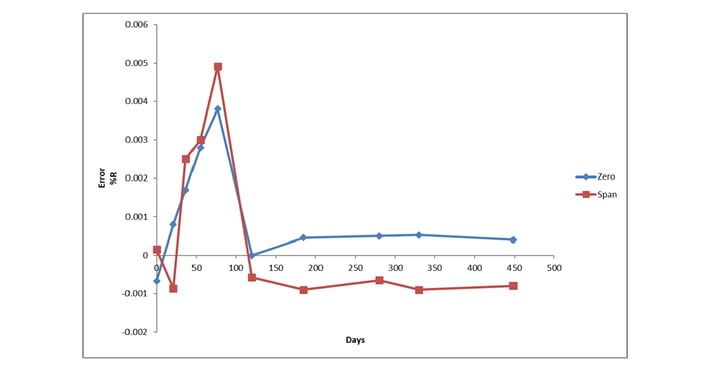Long-term stability is one of the most important parameters that determine the overall measurement accuracy of a pressure sensor. Long-term stability in pressure sensors is defined by the maximum acceptable change in zero and span values during the course of the calibration interval of the sensor. In short, for a sensor to be considered stable, it should maintain a very low drift in its measurements over the calibration interval.
There are various factors that contribute to the long-term stability of a pressure sensor, especially for a silicon pressure sensor - the sensor die, mechanical stresses, environmental conditions, etc. In addition, as a sensor is packaged and converted into a transducer, processes like electronic design and packaging add their share to the overall drift of the transducer. This problem is further magnified with precision silicon pressure transducers, where the scope of error is very limited.

Improving the long-term stability of these transducers involves understanding the various drift causing elements and making corrections or adjustments to these processes:
- Sensor element - The manufacturing quality of the sensor element and various sub-components like the silicon and isolation diaphragm influence stability along with mounting components that add mechanical stress.
- Electronics - The process of integrating and converting the output from a sensor in a transducer requires electronics with critical components that cause drift in the output due to resolution, temperature effects and design induced stress effects.
- Firmware - The characterization process inside the transducer determines its performance over different temperatures and determines the pressure output.
- Manufacturing process - The manufacturing process for a pressure transducer involves pressure reference standards and characterization chambers that determine the reference uncertainty of the process.
In order to improve and maintain the stability of silicon transducers, it's imperative to find a premium quality pressure sensor and adjust the manufacturing process, electronics and firmware to get the desired stable output.
Mensor has made some of these adjustments to yield significant improvements in the long-term stability of our silicon pressure transducers. The results of these improvements have led to an improved accuracy specification and a breakthrough in the CPT9000. The following paper documents and verifies those improvements, with pressure data from several of these sensors over an extended period of time.
Related Reading:


